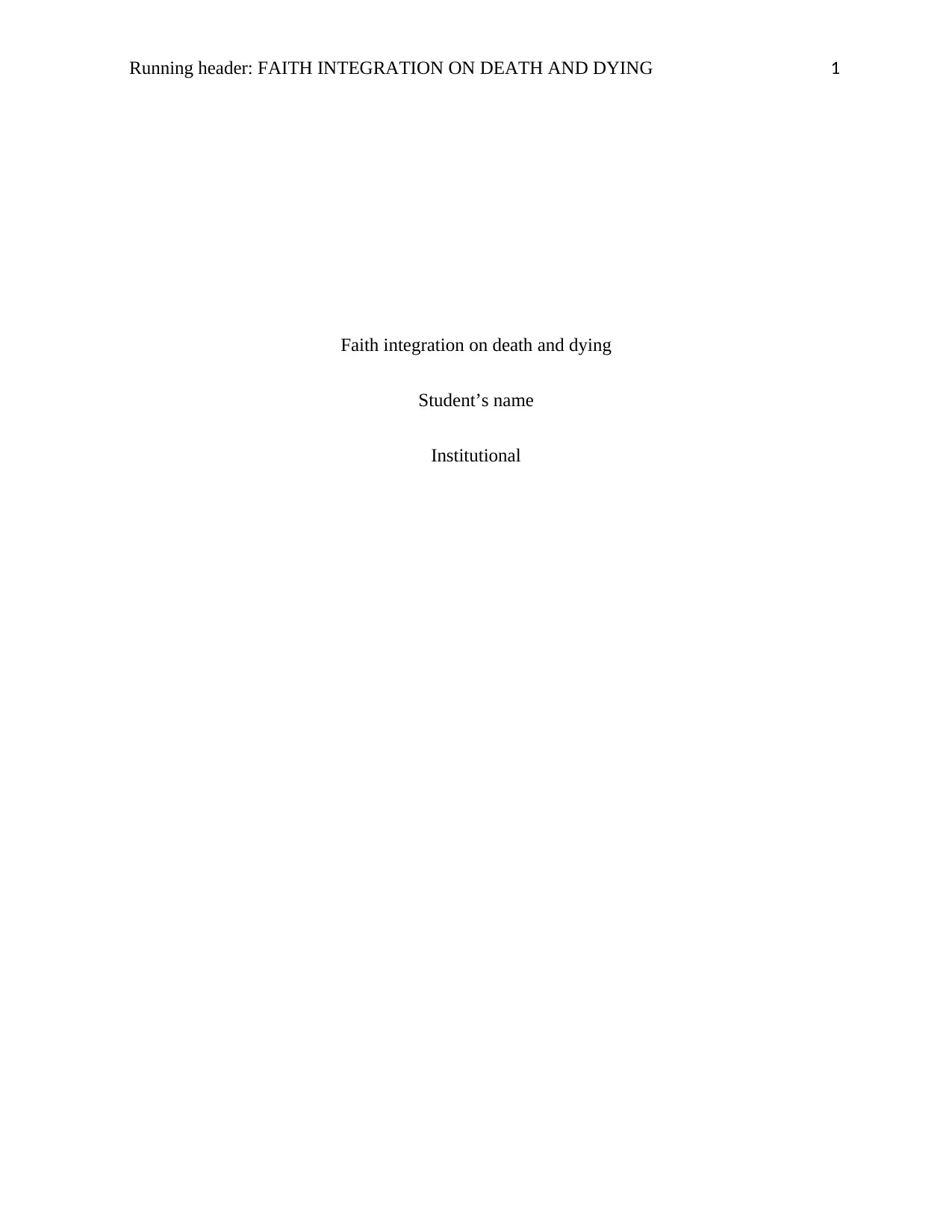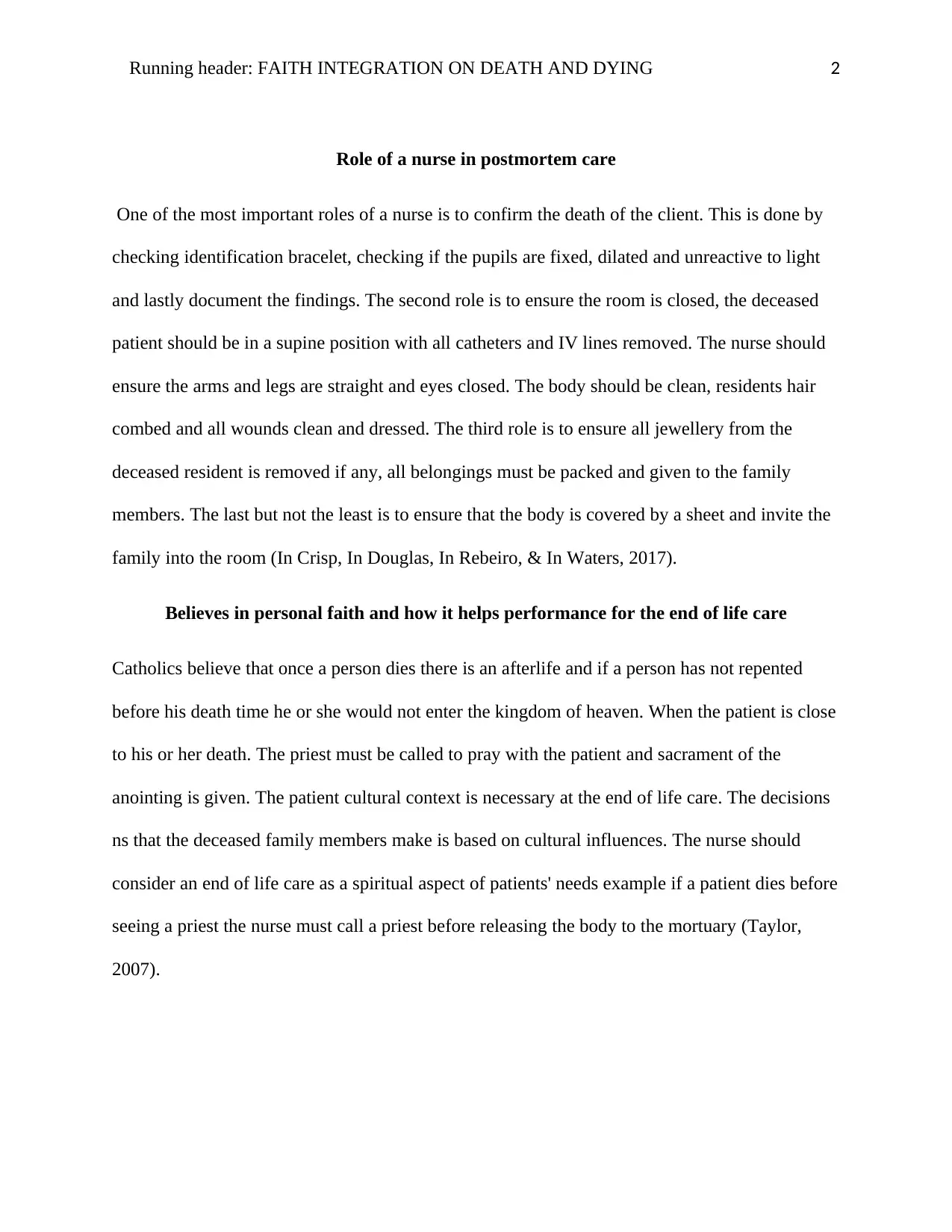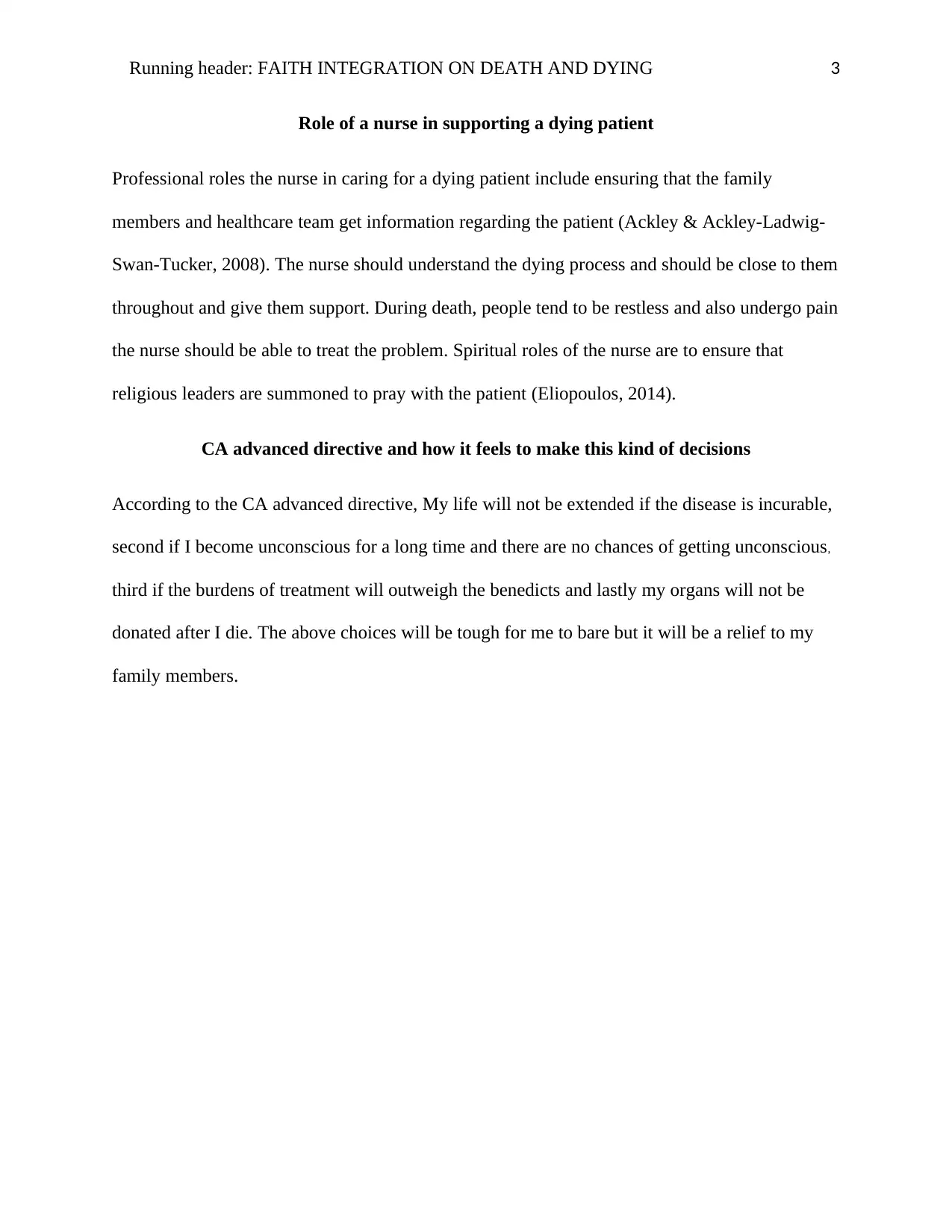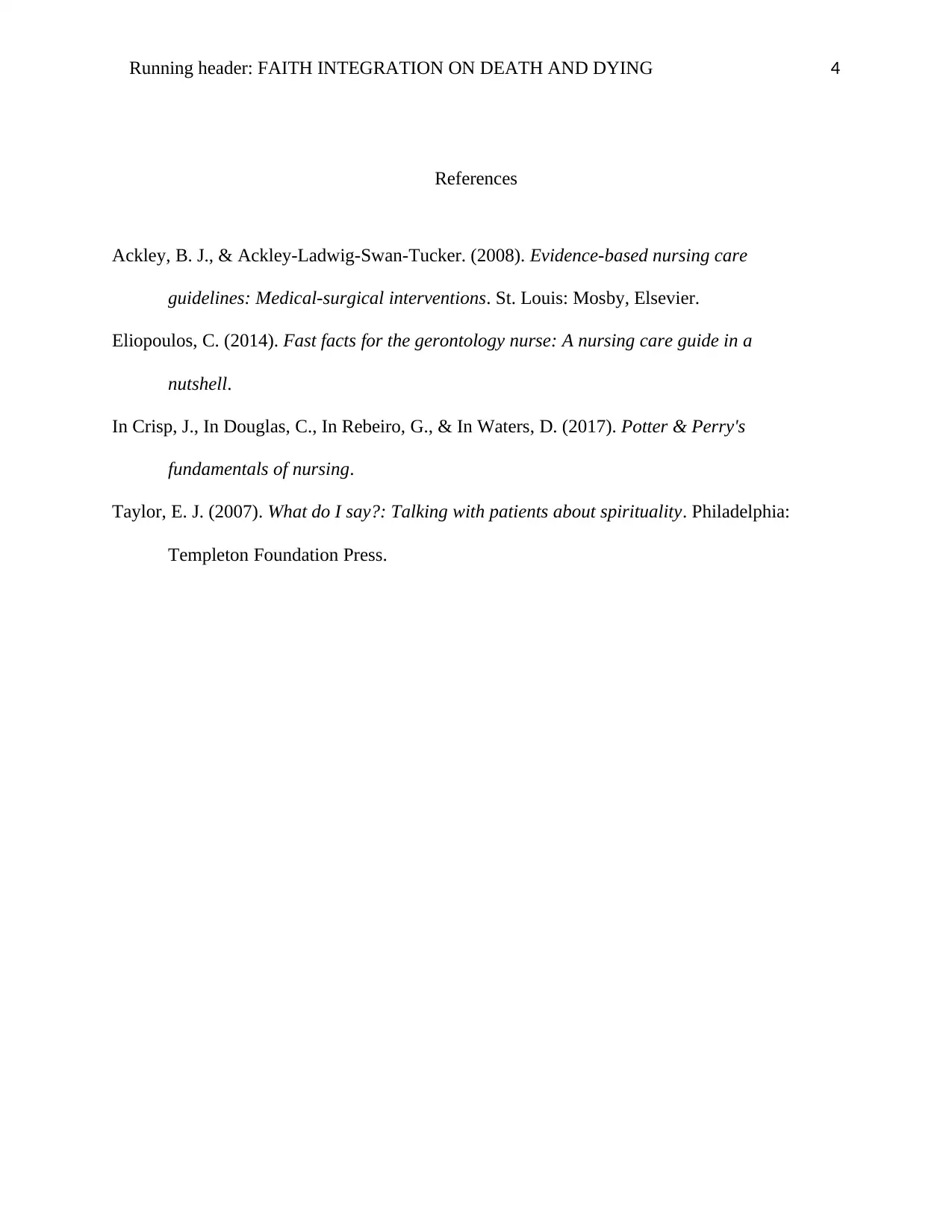Integrating Faith: Nursing Care in Death and Dying Process
VerifiedAdded on 2023/06/15
|4
|687
|168
Essay
AI Summary
This essay discusses the integration of personal faith and beliefs in nursing practice, specifically in the context of death and dying. It covers the role of a nurse in postmortem care, including confirming death, preparing the body, and supporting the family. The essay also explores how personal faith, particularly Catholicism, influences end-of-life care decisions and emphasizes the importance of considering the patient's cultural context. Furthermore, it addresses the professional and spiritual roles of a nurse in supporting a dying patient, such as providing information, managing pain, and facilitating religious practices. Finally, the essay reflects on the CA advanced directive and the emotional challenges of making end-of-life decisions.
1 out of 4











![[object Object]](/_next/static/media/star-bottom.7253800d.svg)